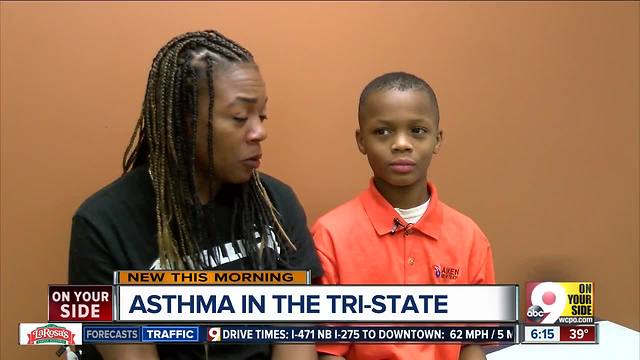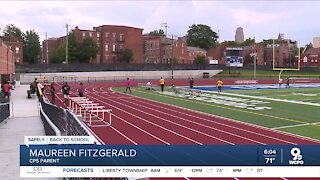Premium Only Content

Cincinnati Public Schools partner with doctors to help asthmatic students
The night Jaykob Lee started coughing and couldn't stop, his mother, Tamaica, assumed he had a cold. She gave him Motrin and Tylenol and put him to bed. But by the next morning, the cough was still coming. She took him to the emergency room, where nurses diagnosed him with asthma. "When your baby can't breathe, there's nothing as a parent you can do," she said. "It's hell." The diagnosis came as a surprise to Lee, who had never considered her son might have asthma, and necessitated serious changes to the family's everyday lifestyle. Tamaica now carries an inhaler in her car and purse and sends one with Jaykob to every sleepover. Flare-ups can mean trips to the doctor, missed days at school, and even days when Jaykob can attend class are marred by sit-outs at recess and missed opportunities to play football. There are 25 million people like Jaykob in the United States. In Hamilton County, at least 36,000 are children, many of whom find their asthma impeding their access to staple childhood experiences. That's why programs such as nurse practitioner Katherine Harmon's Asthma Champion Project, which coordinates with 10 local public schools where students have high rates of asthma, are so important. "There's a prevalence of 18.6 percent of students at those 10 schools have asthma," Harmon said. "It's a huge problem." Participating school health centers provide on-site asthma care as well as spirometry, allergy testing and home visits to identify possible irritants in the asthmatic student's home environment. Dr. O'Dell Owens, president and CEO of Interact for Health, said irritants are often precisely the problem, and the only solution is to improve the housing conditions in which the student lives. He added that he believes race plays a role in these occurrences: Black children may be more likely to live in environments that contain breathing hazards such as mold and insect infestations. "We really need to elevate the housing stock in Cincinnati," he said. "If not, we're never going to have the healthiest region that we're really striving for. Parents have to try to find housing or put more pressure through the Health Department on their landlord to fix that building up."
-
 2:42
2:42
WCPO
1 year agoUC police investigating sexual assault
388 -
 2:04
2:04
WCPO
4 years agoLast week of classes for Cincinnati Public Schools students
12 -
 3:18
3:18
WCPO
4 years agoCincinnati Public Schools reevaluating reopening plan
181 -
 2:49
2:49
WCPO
4 years agoDigital divide in Cincinnati Public Schools
14 -
 1:56
1:56
WCPO
4 years agoCincinnati Public Schools discusses reopening plan
498 -
 1:53
1:53
WCPO
4 years agoNo fall athletics for Cincinnati Public Schools
16 -
 2:22
2:22
WCPO
4 years agoCincinnati Public Schools to combat racism against Black students, staff in new policy
11 -
 0:59
0:59
WCPO
4 years agoCincinnati Public Schools launches TV station
21 -
 1:33
1:33
WCPO
4 years agoCincinnati Public Schools to host town hall for parents
6 -
 2:37
2:37
WCPO
4 years agoCincinnati Public Schools moving ahead with remote learning plan for first 5 weeks
271